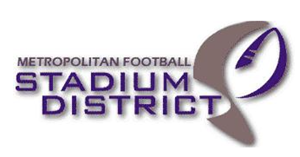Denver's New NWSL Stadium: A Game-Changer for the Community
March 20, 2025, 5:00 pm
Denver is on the brink of a sports renaissance. A new National Women’s Soccer League (NWSL) team is set to call the city home, and with it comes a bold vision: a 14,500-seat stadium and an entertainment district at Santa Fe Yards. This project promises to breathe life into a long-neglected area, transforming it into a vibrant hub for sports and community events.
The vision is clear. Mayor Mike Johnston envisions this stadium as a “transformational addition” to southwest Denver. It’s not just about soccer; it’s about revitalization. The site, once a vacant lot for nearly two decades, is ready to shed its past. The stadium will serve as a magnet, drawing people to the heart of the neighborhood. It’s a chance to turn dirt into dreams.
Vanderbilt Park East will play a crucial role in this transformation. Once dedicated in 1956, the park has languished in obscurity. Now, it will be integrated into the stadium design, allowing fans to glimpse the action from its grounds. This connection between park and stadium is a bridge to community engagement. It’s a place where families can gather, watch events, and enjoy the outdoors.
The stadium will not only host NWSL matches but also a variety of events. Graduations, high school sports, movie nights, art festivals, farmers markets, and concerts will fill the calendar. This year-round usage ensures the stadium is more than just a venue; it becomes a community cornerstone. It’s a canvas for memories, painted with the colors of local culture.
The Santa Fe Yards location was not chosen lightly. It stood out among hundreds of potential sites. The land, valued at approximately $24 million, has a rich history as the former Gates Rubber Company site. While the exact purchase price remains under wraps, the city is optimistic about the agreement. It’s a step toward progress, a leap into the future.
The city council will soon review the land deal. This is a critical moment. Approval will pave the way for necessary re-zoning, transforming the vision into reality. The previous mixed-use development plan fell through during the pandemic, but this new stadium project breathes new life into those aspirations. It’s a phoenix rising from the ashes of stalled development.
Accessibility is a key component of the design. The stadium will be connected to the I-25/Broadway light rail station, making it easy for fans to arrive. The vision extends beyond the stadium itself. It aims to create a pedestrian-friendly environment, linking neighborhoods like Baker, Washington Park West, and Ruby Hill. Imagine biking along the South Platte trail, seamlessly transitioning to the stadium. It’s a pathway to community, a route to connection.
The cost of the stadium is still a mystery, but it’s expected to be on the higher end of comparable venues. Kansas City’s CPKC Stadium, the first NWSL-specific stadium, opened last year at a cost of $120 million. Denver’s project aims to match that ambition, but with a twist. The surrounding entertainment district will enhance the experience, offering restaurants, bars, and shops. It’s a complete package, a destination for fans and families alike.
Family-friendly amenities are a priority. The design includes mothers’ rooms, family rooms, stroller storage, and even a playground. This attention to detail ensures that everyone feels welcome. It’s about creating an inclusive space where memories can be made, not just games played.
The ownership group will finance the stadium entirely, but the city will play a significant role in developing the site. Public space will remain under city ownership, ensuring that the community retains a stake in its future. This partnership between the city and the ownership group is a model for collaboration. It’s a shared vision, a joint effort to build something lasting.
Infrastructure improvements will accompany the stadium. Roads, sidewalks, and parking lots will be developed in tandem. This holistic approach ensures that the stadium is not an island but part of a thriving community. It’s about creating a neighborhood, not just a venue.
A Tax Increment Financing (TIF) district is already in place, established in 2017. This special tax district will help fund future developments in the area. As properties within the TIF pay taxes, those funds will be reinvested into the community. It’s a cycle of growth, a way to ensure that the benefits of the stadium extend far beyond its walls.
Johnston believes this stadium will be a monument to women’s sports. It’s a place where achievements can be celebrated, where young girls can dream big. The excitement is palpable. Fans are already lining up, with nearly 10,000 season-ticket deposits. The community is ready to embrace this new chapter.
A name for the stadium and the team is still in the works. A fan vote has narrowed it down to six options, each reflecting the spirit of Denver. This engagement is a testament to the community’s investment in the project. It’s not just a team; it’s a shared identity.
As the city prepares for the next steps, anticipation builds. The announcement of a temporary home stadium and training facility is on the horizon. This is just the beginning. Denver is poised to become a beacon for women’s sports, a place where dreams take flight.
In conclusion, the new NWSL stadium at Santa Fe Yards is more than a sports venue. It’s a catalyst for change, a hub for community engagement, and a celebration of women’s sports. As construction begins, the city stands ready to embrace a future filled with excitement, connection, and unforgettable moments. Denver is ready to kick off a new era.
The vision is clear. Mayor Mike Johnston envisions this stadium as a “transformational addition” to southwest Denver. It’s not just about soccer; it’s about revitalization. The site, once a vacant lot for nearly two decades, is ready to shed its past. The stadium will serve as a magnet, drawing people to the heart of the neighborhood. It’s a chance to turn dirt into dreams.
Vanderbilt Park East will play a crucial role in this transformation. Once dedicated in 1956, the park has languished in obscurity. Now, it will be integrated into the stadium design, allowing fans to glimpse the action from its grounds. This connection between park and stadium is a bridge to community engagement. It’s a place where families can gather, watch events, and enjoy the outdoors.
The stadium will not only host NWSL matches but also a variety of events. Graduations, high school sports, movie nights, art festivals, farmers markets, and concerts will fill the calendar. This year-round usage ensures the stadium is more than just a venue; it becomes a community cornerstone. It’s a canvas for memories, painted with the colors of local culture.
The Santa Fe Yards location was not chosen lightly. It stood out among hundreds of potential sites. The land, valued at approximately $24 million, has a rich history as the former Gates Rubber Company site. While the exact purchase price remains under wraps, the city is optimistic about the agreement. It’s a step toward progress, a leap into the future.
The city council will soon review the land deal. This is a critical moment. Approval will pave the way for necessary re-zoning, transforming the vision into reality. The previous mixed-use development plan fell through during the pandemic, but this new stadium project breathes new life into those aspirations. It’s a phoenix rising from the ashes of stalled development.
Accessibility is a key component of the design. The stadium will be connected to the I-25/Broadway light rail station, making it easy for fans to arrive. The vision extends beyond the stadium itself. It aims to create a pedestrian-friendly environment, linking neighborhoods like Baker, Washington Park West, and Ruby Hill. Imagine biking along the South Platte trail, seamlessly transitioning to the stadium. It’s a pathway to community, a route to connection.
The cost of the stadium is still a mystery, but it’s expected to be on the higher end of comparable venues. Kansas City’s CPKC Stadium, the first NWSL-specific stadium, opened last year at a cost of $120 million. Denver’s project aims to match that ambition, but with a twist. The surrounding entertainment district will enhance the experience, offering restaurants, bars, and shops. It’s a complete package, a destination for fans and families alike.
Family-friendly amenities are a priority. The design includes mothers’ rooms, family rooms, stroller storage, and even a playground. This attention to detail ensures that everyone feels welcome. It’s about creating an inclusive space where memories can be made, not just games played.
The ownership group will finance the stadium entirely, but the city will play a significant role in developing the site. Public space will remain under city ownership, ensuring that the community retains a stake in its future. This partnership between the city and the ownership group is a model for collaboration. It’s a shared vision, a joint effort to build something lasting.
Infrastructure improvements will accompany the stadium. Roads, sidewalks, and parking lots will be developed in tandem. This holistic approach ensures that the stadium is not an island but part of a thriving community. It’s about creating a neighborhood, not just a venue.
A Tax Increment Financing (TIF) district is already in place, established in 2017. This special tax district will help fund future developments in the area. As properties within the TIF pay taxes, those funds will be reinvested into the community. It’s a cycle of growth, a way to ensure that the benefits of the stadium extend far beyond its walls.
Johnston believes this stadium will be a monument to women’s sports. It’s a place where achievements can be celebrated, where young girls can dream big. The excitement is palpable. Fans are already lining up, with nearly 10,000 season-ticket deposits. The community is ready to embrace this new chapter.
A name for the stadium and the team is still in the works. A fan vote has narrowed it down to six options, each reflecting the spirit of Denver. This engagement is a testament to the community’s investment in the project. It’s not just a team; it’s a shared identity.
As the city prepares for the next steps, anticipation builds. The announcement of a temporary home stadium and training facility is on the horizon. This is just the beginning. Denver is poised to become a beacon for women’s sports, a place where dreams take flight.
In conclusion, the new NWSL stadium at Santa Fe Yards is more than a sports venue. It’s a catalyst for change, a hub for community engagement, and a celebration of women’s sports. As construction begins, the city stands ready to embrace a future filled with excitement, connection, and unforgettable moments. Denver is ready to kick off a new era.



